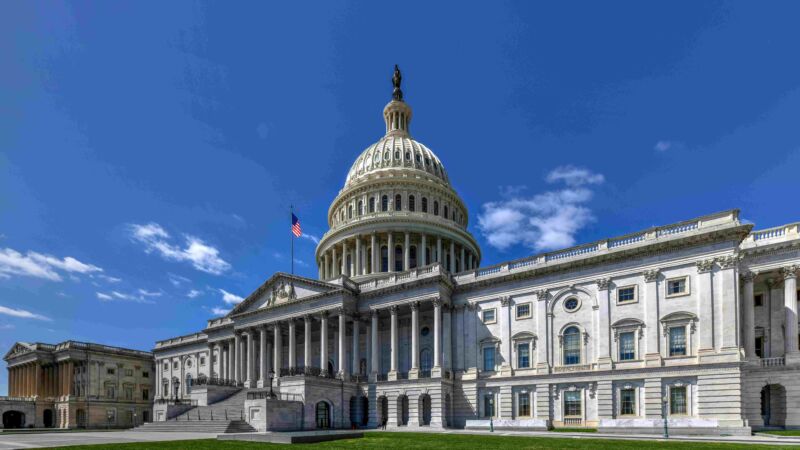Republicans scored a major victory this month by passing their FY2025 budget resolution. To refresh your memory, this step was needed to kickstart the all-important reconciliation process, which allows Congress to pass a budget-related bill with only a simple majority. For the GOP, reconciliation is the ticket to extending key Tax Cuts and Jobs Act (TCJA) provisions, funding border security, and making cuts to mandatory spending programs. However, as Republicans set out to draft their “big, beautiful bill,” obstacles are starting to emerge.
Jump to ↓
| Disagreement over spending cuts |
| Adhering to reconciliation rules |
| Complexity of tax provisions |
| President Trump’s tax proposals |
| Ambitious timeframe |
| Moving forward |
| Potential business opportunities for accounting professionals |
Disagreement over spending cuts
Perhaps the biggest obstacle is a disagreement between House and Senate Republicans over spending cuts. In fact, the budget resolution almost failed in the House over this issue. The Senate’s version of the resolution, which was ultimately adopted, established a floor of $4 billion in spending cuts. The House, however, wanted $1.5 trillion in spending cuts. After Senate Majority Leader John Thune (R-SD) informally assured the House that GOP senators were on board with the $1.5 trillion target, the budget resolution passed 216 to 214.
Despite Senator Thune’s statement, some Republicans are questioning whether he actually committed to $1.5 trillion in spending cuts. As we have seen, fiscal hawks and moderate Republicans often have conflicting demands, especially when it comes to Medicaid funding. If an agreement can’t be reached, the reconciliation bill could be significantly delayed or even die.
Adhering to reconciliation rules
As explained in my first post about tax reform, to pass a bill under the reconciliation process, Congress must adhere to a strict set of rules. For example, there is no filibuster in the Senate, and the proposed legislation can’t increase the deficit outside a 10-year window. The GOP’s budget resolution permits a $1.5 trillion deficit increase for tax cuts and uses a current-policy baseline for scoring the extension of expiring TCJA provisions. In other words, the proposed $1.5 trillion deficit increase could accommodate additional tax cuts, such as changes to the child tax credit and no tax on tips.
From a procedural standpoint, it remains to be seen whether the cost of permanently extending the TCJA would add to the federal deficit. That’s where the Senate parliamentarian, Elizabeth MacDonough, comes into play. MacDonough is in charge of making sure a reconciliation bill adheres to certain procedural and substantive constraints. If MacDonough agrees that a current-policy baseline is appropriate, the Republicans’ path to permanently extending the TCJA would be much easier.
Complexity of tax provisions
Although simplification is often a goal of tax reform, chances are the reconciliation bill will add more complexity to the tax code. Congress’s primary task is to extend the TCJA. However, some TCJA provisions, such as the state and local tax (SALT) cap, remain controversial and will most likely need to be reworked. There have been proposals to either increase the SALT cap or merely let it sunset, but those solutions would add to the expense of the reconciliation bill. The GOP will need to be aware of budget constraints as it determines which TCJA provisions should be modified or extended as is.
President Trump’s tax proposals
Adding to the complexity of the tax reform bill is President Trump’s promise to exempt tips, overtime pay, and Social Security benefits from federal income tax. Some Republicans are wondering how those provisions will fit into the established budget. Finding a way to pay for those exemptions could be difficult, with some GOP lawmakers proposing a top individual tax rate of 40% or even a SALT cap on C corporations.
Also, some Republicans want to roll back the Inflation Reduction Act energy tax credits to pay for President Trump’s tax proposals. But not all Republicans agree on this, with some GOP lawmakers regarding the credits as a way to promote domestic energy development. As internal disagreements among Republicans surface, the likelihood of quickly passing a reconciliation bill decreases.
Ambitious timeframe
Last, but certainly not least, Republicans have been tasked with putting a tax reform bill on the President’s desk by Memorial Day. I must admit that’s a pretty ambitious deadline. The process of drafting such a substantial bill and securing support from the various Republican lawmakers will be challenging, as it involves balancing many complex issues such as tax cuts, military spending, energy policy, and border security. One misstep, and the entire bill could fail.
Moving forward
As Congress moves forward, the path to tax reform is full of challenges. While significant progress has been made with the passing of the FY2025 budget resolution, certain obstacles will need to be overcome. The coming months will be crucial as lawmakers work to draft and pass a comprehensive reconciliation bill that satisfies all voices within the Republican party.
Potential business opportunities for accounting professionals
These changes could lead to some potentially complex questions for business clients. Forward-looking accounting firms should be ready to advise their clients on any questions that may arise. Adopting an advisory service model can help to ensure that your firm is compensated for the expertise it provides during these times.
If you would like to learn more about this topic, please download our white paper, Strategic tax planning: Responding to political change, for additional information.









